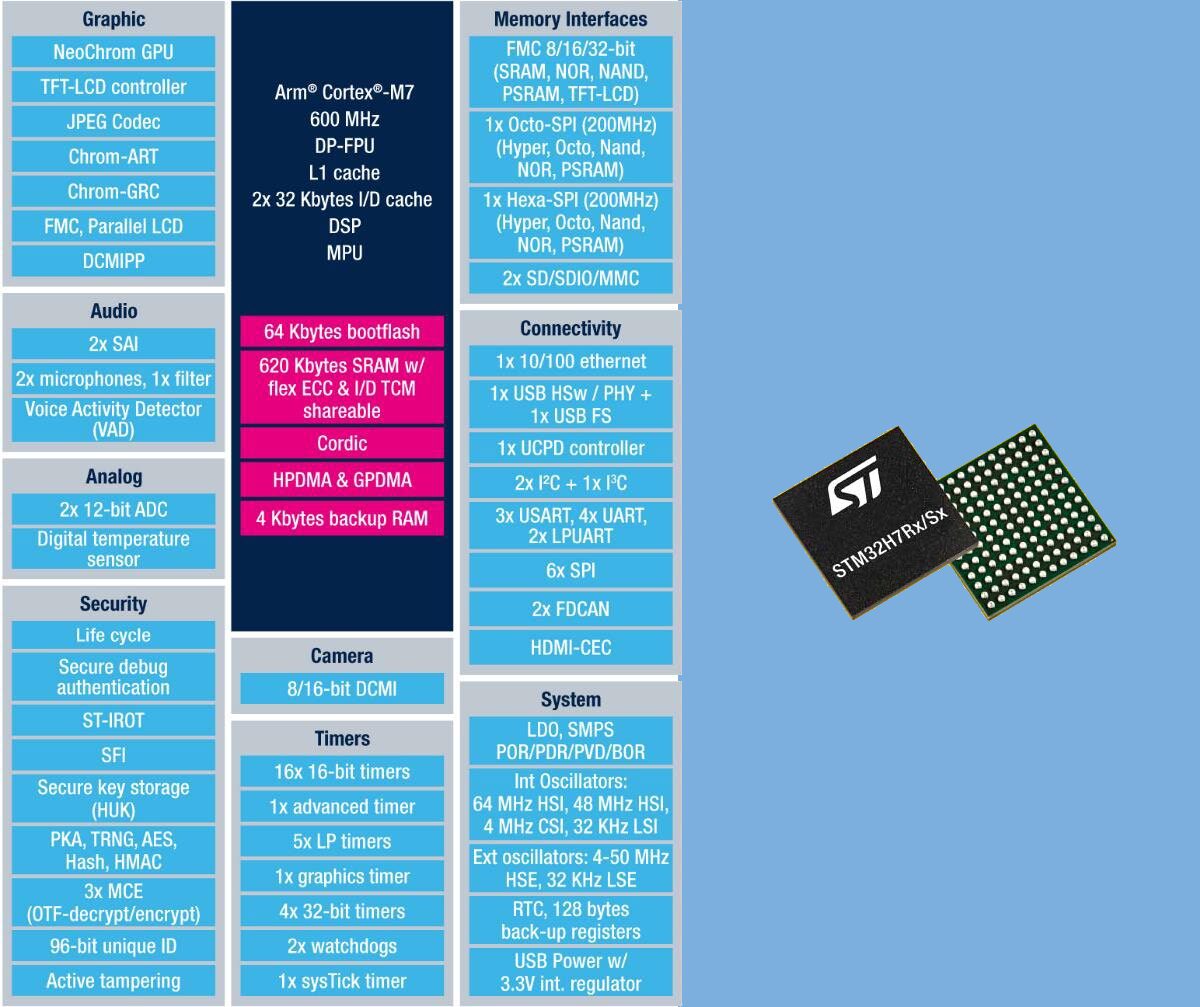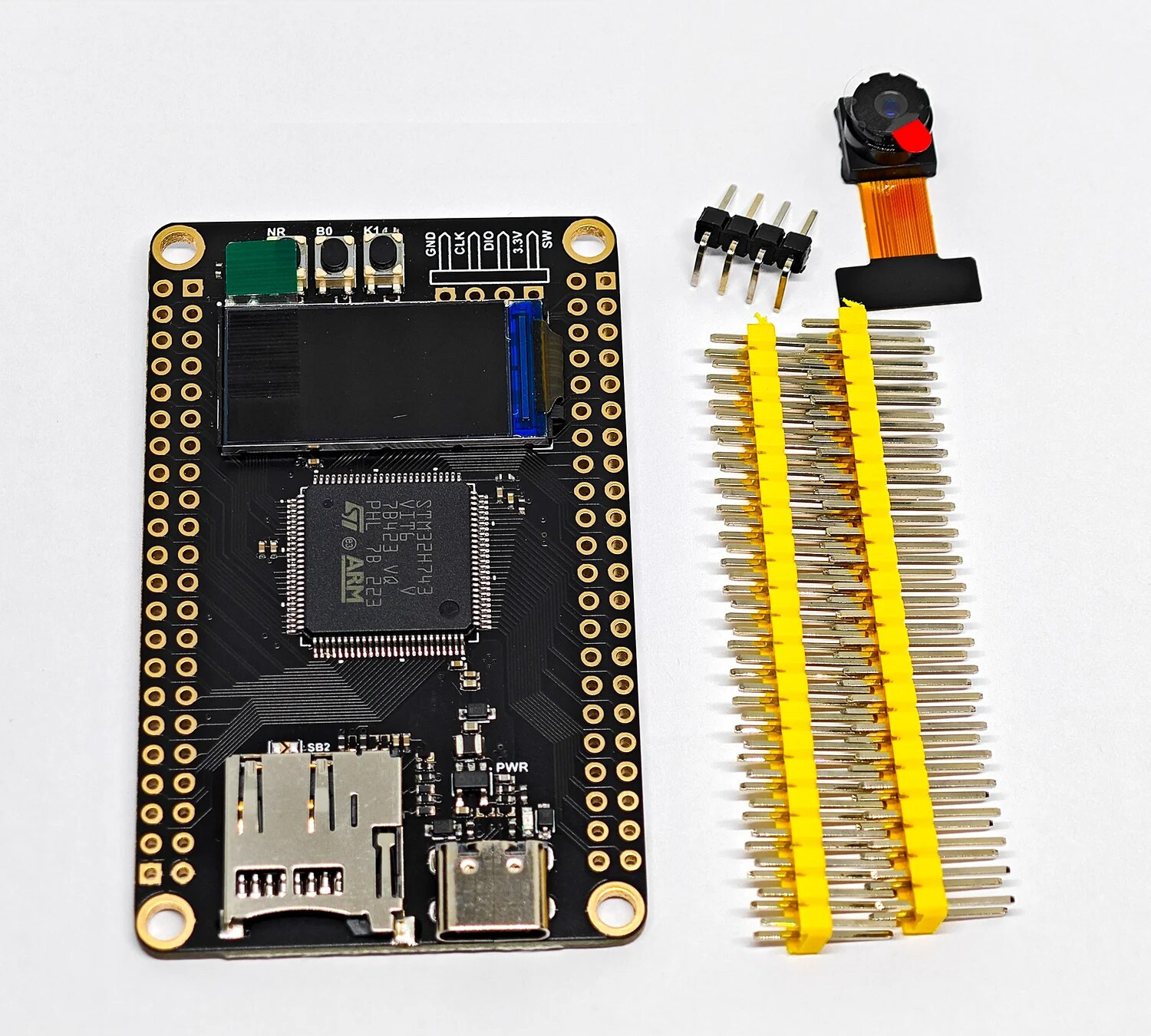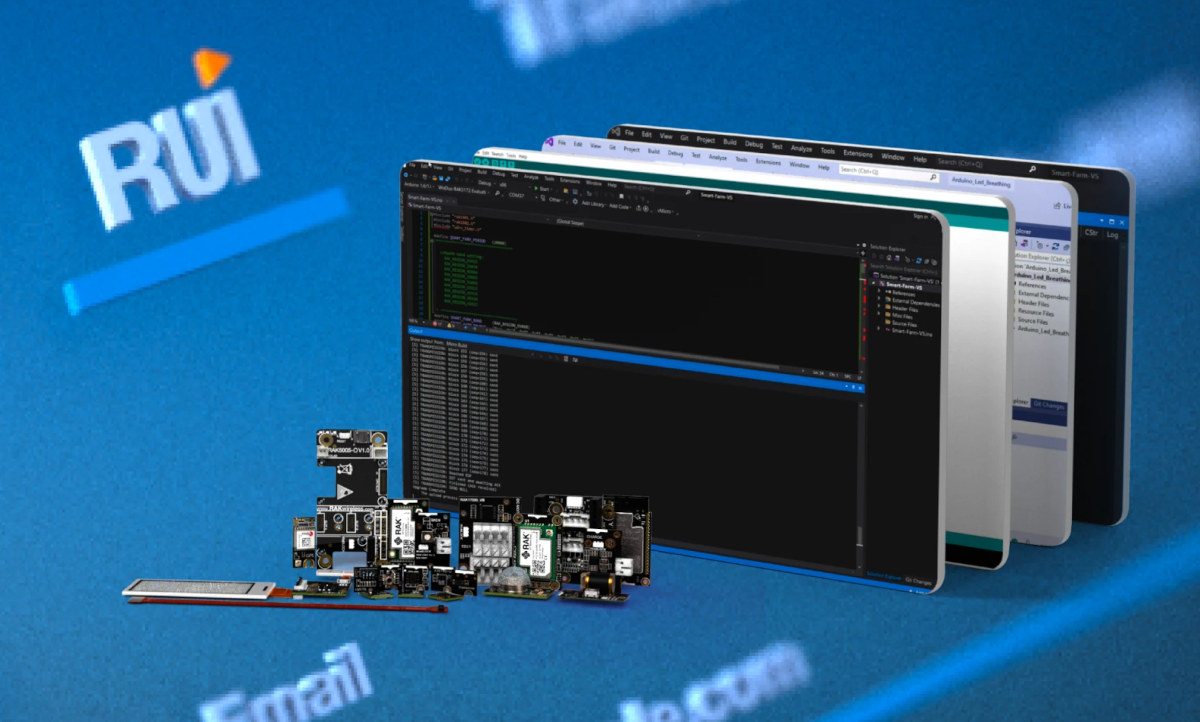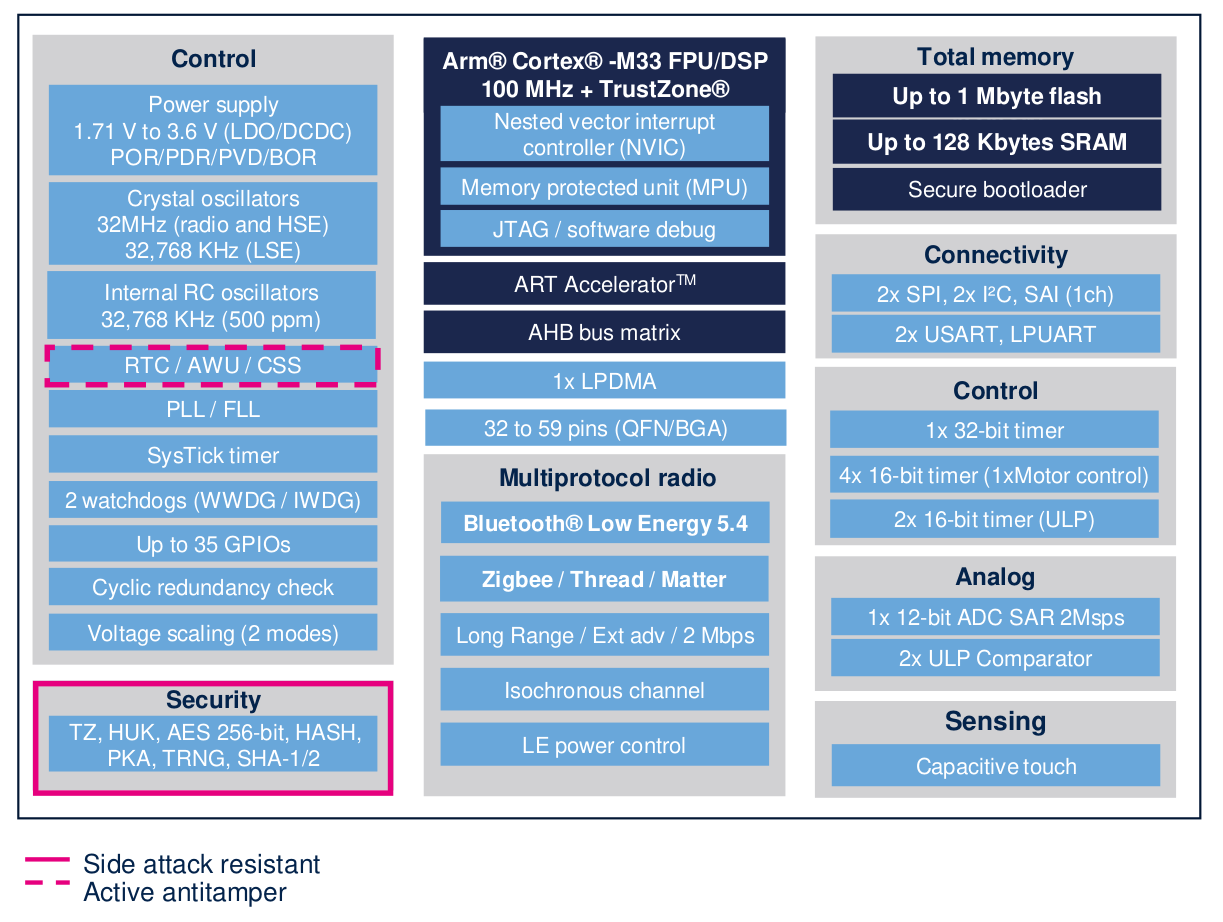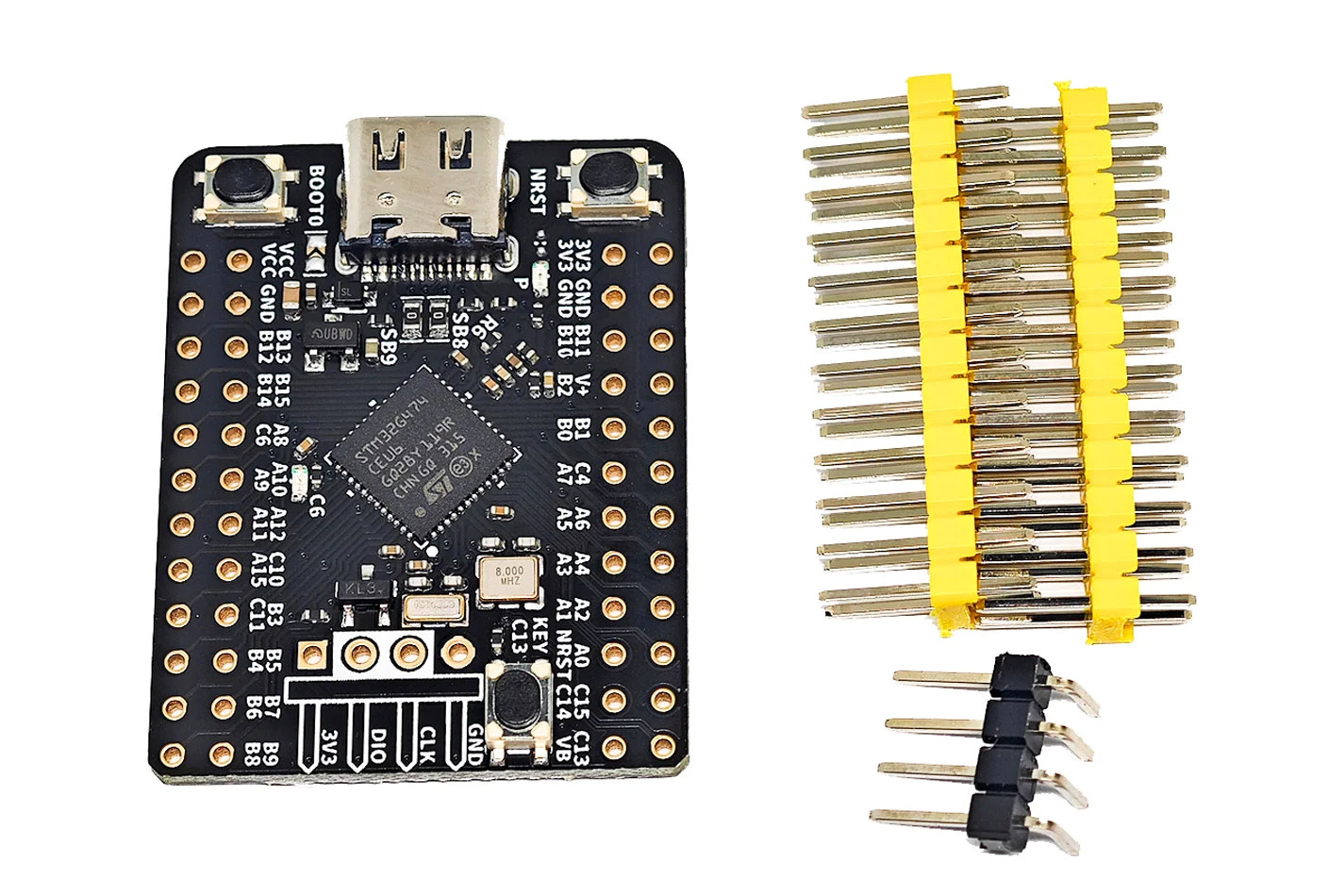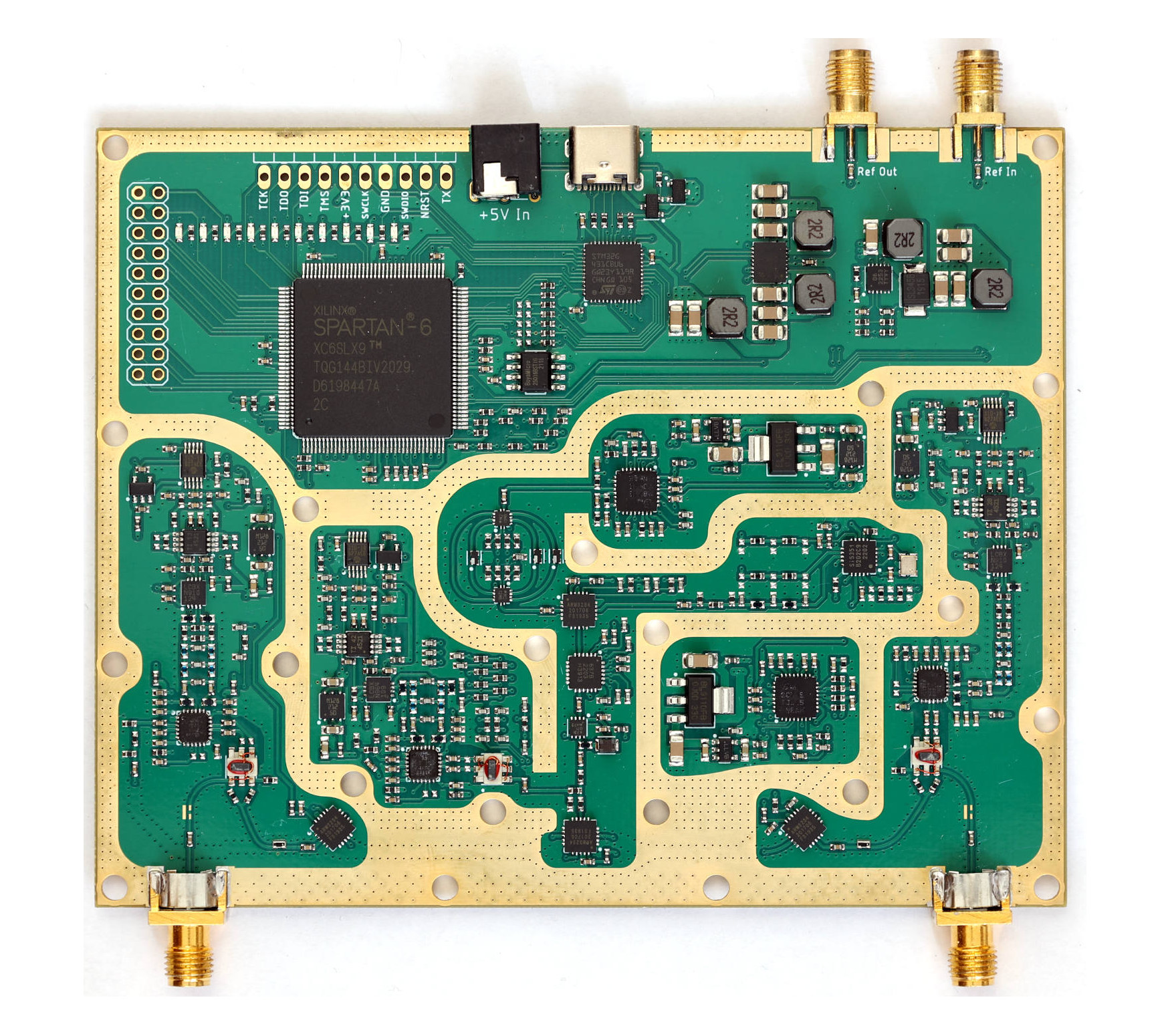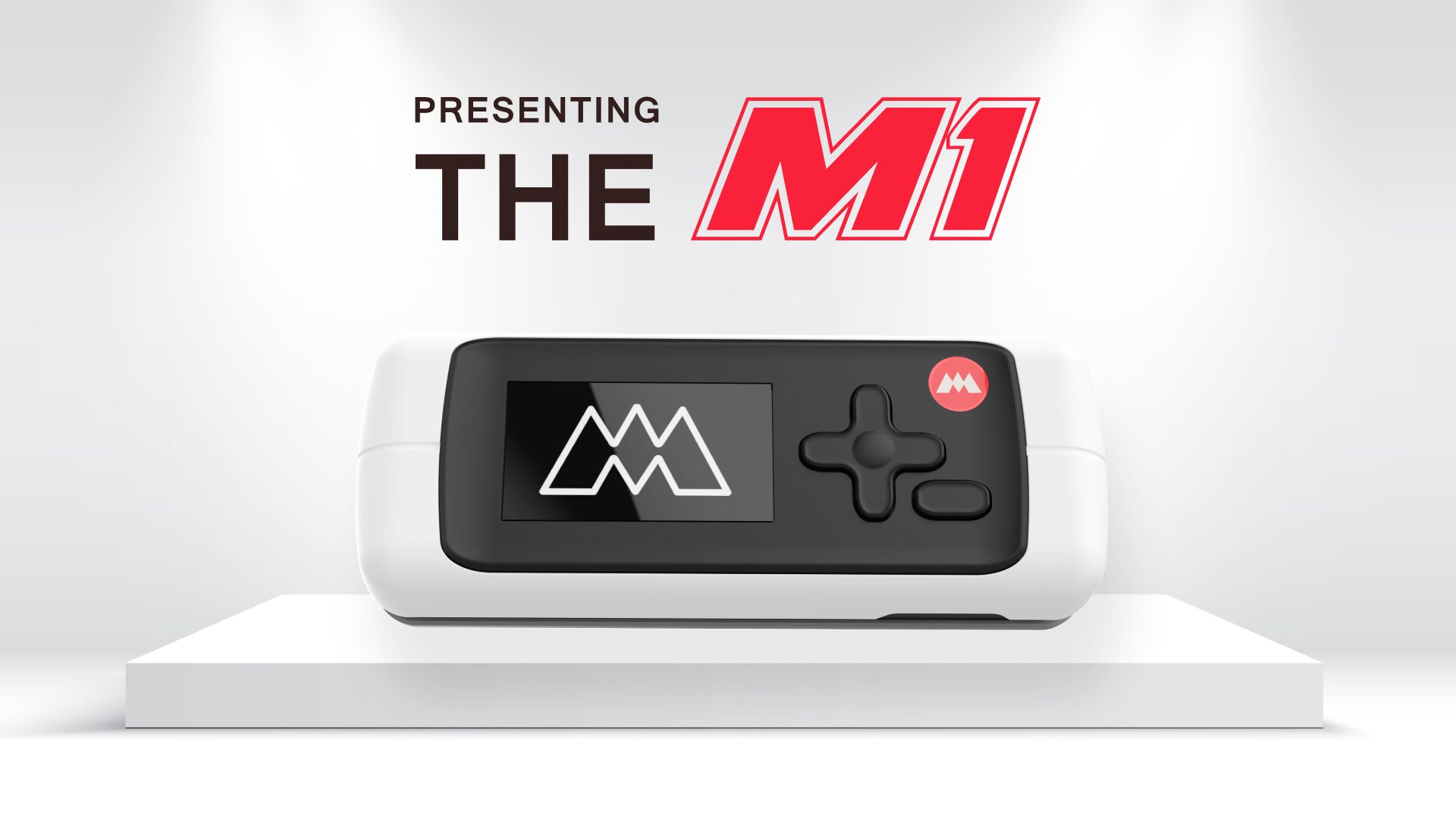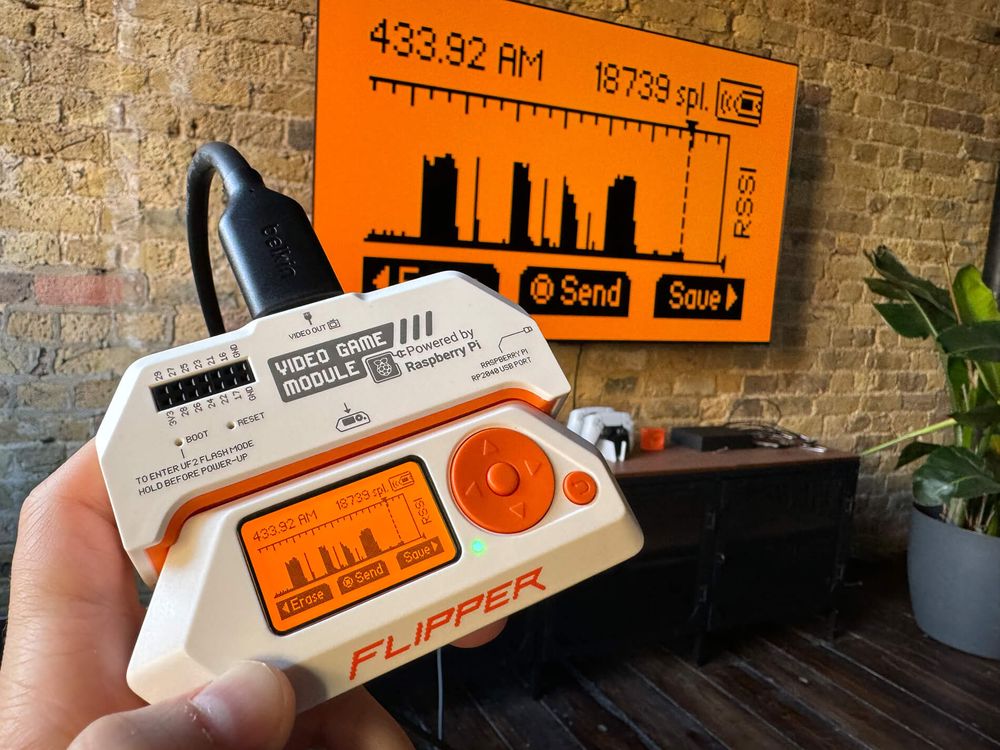STMicro has launched the high-performance 600 MHz STM32H7R/S Arm Cortex-M7 microcontrollers: the STM32H7R3/S3 General-purpose MCU lines, and STM32H7R7/S7 graphics MCU lines adding a NeoChrom 2.5D GPU. Both ship with a large 620KB SRAM and a small 64KB boot flash. The reason for the small boot flash is to have the application code and data stored off-chip memory ICs to provide more flexibility to customers when it comes to the choice of memory type and capacity to fulfill the application requirements and lower the BoM cost. The “S” in the STM32H7S microcontrollers stands for Security with a crypto/hash engine that can help the final product achieve SESIP Level 3 and/or PSA Certified Level 3 certifications. Many of the specifications are similar to the STM32H7 microcontrollers, but performance is better going slightly faster than the 550MHz STM32H7 MCUs added in 2020, and the STM32H7R/S adds some new features: 200 MHz Hexadeca SPI […]
WeAct STM32H743 Arm Cortex-M7 board ships with a 0.96-inch LCD and a choice of camera sensors
WeAct STM32H743 is a small MCU development board powered by a 480 MHz STMicro STM32H743VIT6 Cortex-M7 microcontroller and equipped with a small LCD and a camera connector taking OV2640, OV5640-AF, OV7670, or OV7725 camera sensors. The board comes with 2048KB flash and 1MB RAM built into the STM32H7 microcontroller, 8MB SPI flash, 8MB QSPI flash, a microSD for data storage, USB-C port for power and programming, a few buttons, and plenty of I/Os accessible through two 44-pin headers. WeAct STM32H743 specifications: MCU – STMicro STM32H743VIT6 Arm Cortex-M7 microcontroller at 480MHz with FPU, DSP, and MPU, 2048KB flash, 1MB RAM Storage – 8MB SPI Flash, 8MB QSPI Flash (bootable), microSD card socket Display – 0.96-inch TFT LCD based on ST7735 SPI display driver Camera 8-bit Digital Camera Interface (DCMI) with autofocus support OV2640 (1600×1200), OV5640-AF (2592×1944 with autofocus), OV7670 (640×480), or OV7725 (640×480) camera sensors are supported USB – 1x USB-C […]
RAKwireless open sources RUI3 multi-target IoT development platform
RAKwireless has made its RUI3 IoT software development platform open-source so that customers or users can implement “nice-to-have” features on top of the features already implemented by the company which could make it even more versatile in a wider range of IoT scenarios. Introduced in 2022, the RAK Unified Interface v3, or RUI3 for shorts, is a modular IoT platform based on the Arduino SDK with additional functions for IoT connectivity and low power that supports a variety of devices and applications. So developers can learn the language, code once, and use the same software on multiple WisBlock core platforms including Nordic Semi nRF52, STM32, ESP32, and Raspberry Pi RP2040 instead of having to juggle between different the Arduino BSP, the ESP-IDF framework, Nordic nRF Connect SDK, or Raspberry Pi C SDK. Users could already use the RUI3 firmware with the RAK3172 (STM32), RAK4630/RAK4631 (nRF52), or RAK11720 (Apollo3) WisBlock Core […]
STM32WBA microcontrollers with Bluetooth LE 5.4, Zigbee, Thread, and Matter to comply with US and EU Cybersecurity regulations
STMicro’s new STM32WBA series, starting with the STM32WBA52, STM32WBA54, and STM32WBA55 devices, is a family of Arm Cortex-M33 wireless microcontrollers with Bluetooth LE 5.4, Zigbee, Thread, and Matter connectivity that achieved the SESIP (Security Evaluation Standard for IoT Platforms) Level 3 security certification and should make them compliant with US Cyber Trust Mark and EU Radio Equipment Directive (RED) regulations due to become mandatory in 2025. The 100MHz STM32WBA54 and STM32WBA55 microcontrollers come with up to 1MB of flash memory, support Arm TrustZone architecture isolating secure processes and storage, and incorporate background autonomous mode, flexible power-saving states, and analog and digital peripherals found in STMicro STM32U5 ultra-low-power MCUs. STM32WBA54 and STM32WBA55 specifications: MCU core – Arm Cortex-M33 at 100MHz with FPU and DSP Memory – Up to 128KB SRAM Storage – Up to 1 MB flash Wireless Bluetooth Low Energy 5.4 Long Range (LR) capable Up to 2 Mbps Bluetooth […]
WeAct STM32G4 is a tiny board based on STMicro STM32G4 mixed-signal microcontroller
WeAct STM32G4 is a tiny development board based on a 170 MHz STMicro STM32G4 Arm Cortex-M4F mixed-signal microcontroller with DSP instructions and suitable for applications such as motor control, building automation, lighting, digital power meters, and more. Two versions of the board are offered one with an STM32G474CEU6 “Hi-resolution line” microcontroller equipped with 128KB RAM and 512KB flash, and the other with the lower-end STM32G431CBU6 “Access Line” MCU with just 32KB RAM and 128KB flash. The board also comes with a USB-C port for power and programming, three buttons, and two 24-pin headers. WeAct STM32G4 specifications: Microcontroller (one or the other) STMicro STM32G431CBU6 – Arm Cortex-M4F MCU @ 170 MHz with DSP instructions, 32KB RAM, 128KB flash, and math accelerator STMicro STM32G474CEU6 – Arm Cortex-M4F MCU @ 170 MHz with DSP instructions, 128KB RAM, 512KB flash, and math accelerator; high-resolution timer and complex waveform builder plus event handler (HRTIM) for […]
LibreVNA open-source USB vector network analyzer (VNA) works in the 100kHz to 6GHz range
Jan Käberich’s LibreVNA is an open-source hardware USB vector network analyzer (VNA) based on a Spartan-6 FPGA, an STM32 microcontroller, and RF circuitry with MAX2871 and Si5351C chips. The open-source VNA supports two channels and works in the 100kHz to 6GHz frequency range. Vector network analyzers are expensive pieces of electronic test equipment used to measure the magnitude and phase of high-frequency electrical networks costing several thousand dollars. They are commonly used in radio frequency (RF) and microwave engineering applications. Last year, we wrote that Pico Technology released PicoVNA 5 software for Linux, Raspberry Pi, and macOS instead of only providing a Windows program for their commercial PicoVNA devices. I thought it was already a good development even if it was closed-sourced, but LibreVNA goes all the way with an open-source hardware design with hardware design files, the FPGA code, STM32 firmware, and PC software (GUI) all open-source. LivreVNA hardware […]
The M1 device is a Flipper Zero alternative with a faster STM32H5 microcontroller and Wi-Fi connectivity (Crowdfunding)
The M1 is a multitool device that bundles several hacking and penetration tools in a package that looks like a retro-gaming console and could be viewed as a Flipper Zero alternative with a more powerful STMicro STM32H5 Cortex-M33 high-performance MCU featuring Arm TrustZone hardware-based security for additional protection for sensitive data. The M1 multitool device features transceivers for infrared, sub-1 GHz, Bluetooth, NFC, RFID, and Wi-Fi. This means that the M1 can replace most of your remotes as well as your RFID and NFC-based items (membership cards, access fobs, business cards, credit cards, etc.) It also has twelve 3.3V (5V tolerant) GPIO pins that can be used to add extra functionality to the device. M1 specifications: MCU – STM32H5-series microcontroller, with a 32-bit ARM Cortex-M33 core, 1MB RAM Storage – MicroSD card slot Display – 1.54-inch display, 128 x 64 resolution Connectivity Bluetooth 4.2 BR/EDR BLE Sensitivity -96dBm Infrared – […]
Flipper Zero gets a Raspberry Pi RP2040-powered video game module
Flipper Zero hardware & wireless hacking tool can now be used as a proper game console thanks to a Raspberry Pi RP2040-powered video game module that mirrors the display of the device on a larger monitor or TV via DVI/HDMI video output, and also adds a 6-axis motion tracking sensor. The Flipper Zero has been in the news in recent days, notably with Canada’s government banning the device due to car theft (although it only seems feasible on older cars), and today the company has announced the launch of a video game module developed in collaboration with Raspberry Pi Ltd. Video game module specifications: MCU – Raspberry Pi RP2040 dual-core Arm Cortex-M0+ microcontroller clocked up to 133 MHz with 264 kB SRAM Video Output – DVI-D at 640х480 with 60 Hz refresh rate. It also supports HDMI. USB – USB Type-C port connected to the microcontroller. Acts as a USB device […]


